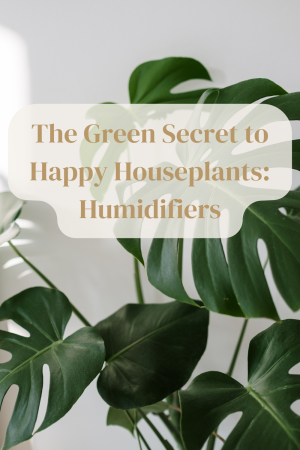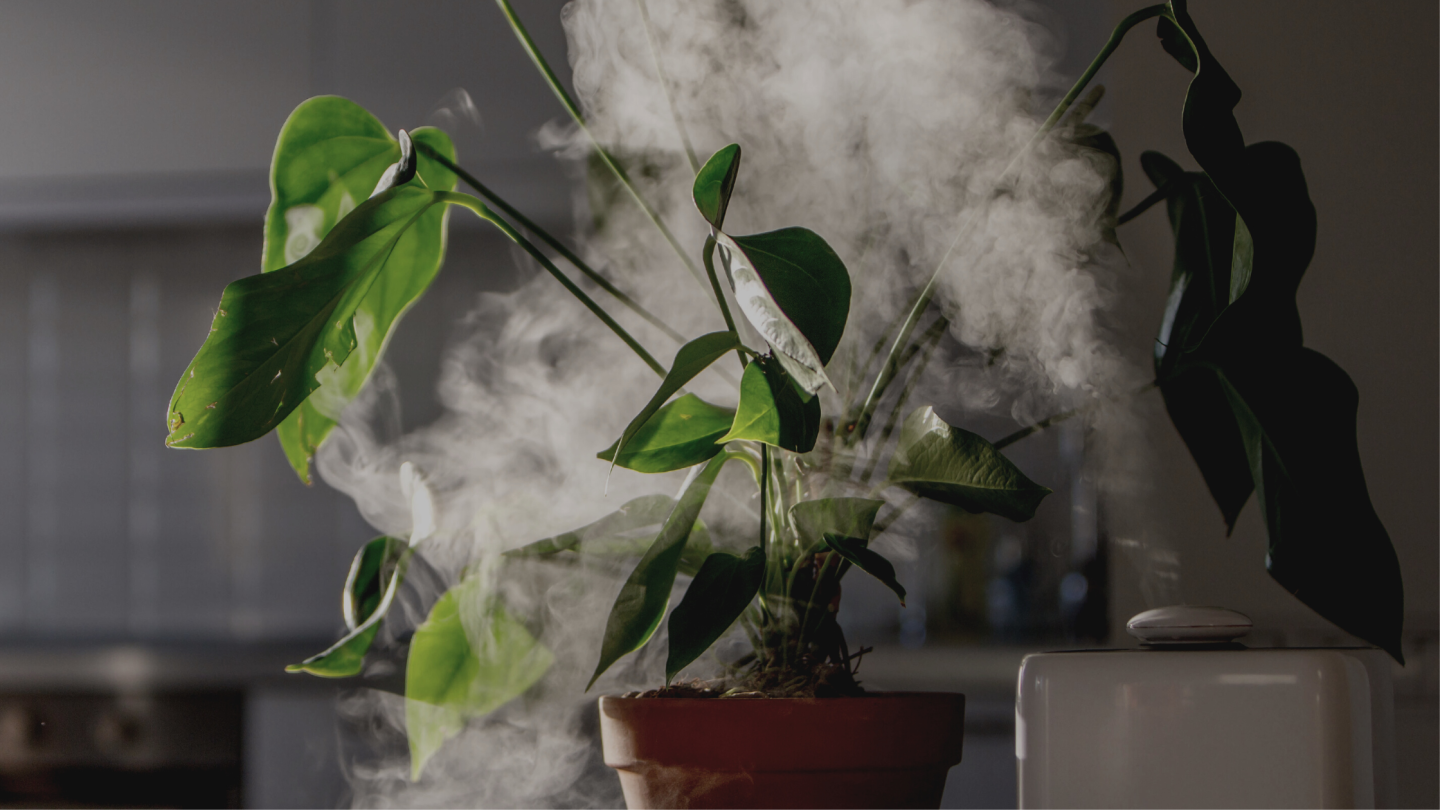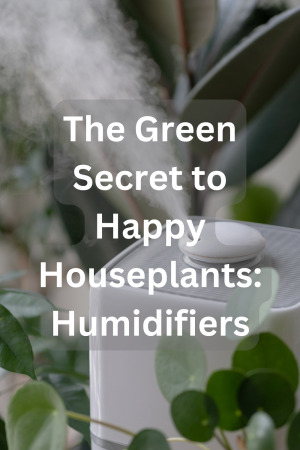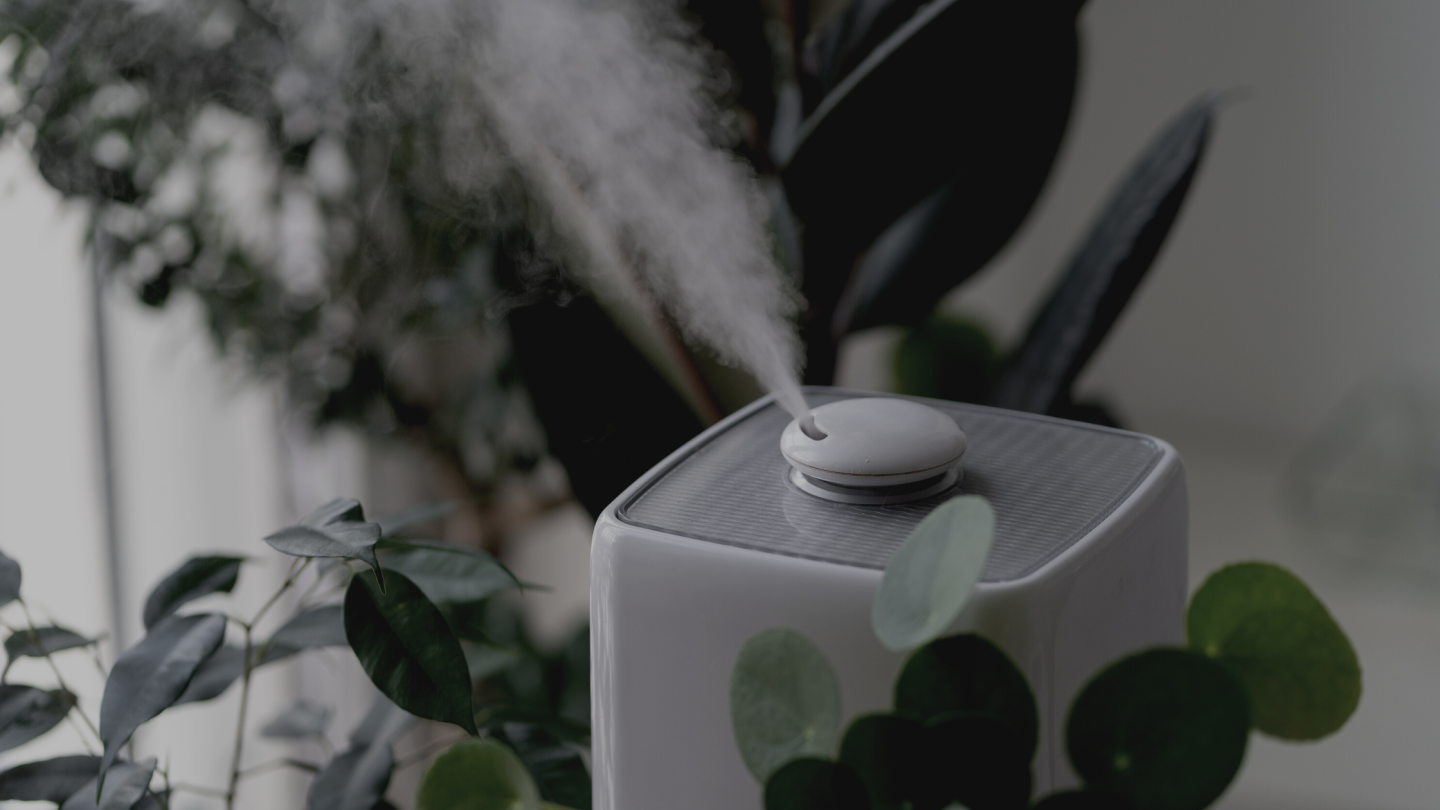
In the pursuit of creating a lush and thriving indoor jungle, plant enthusiasts often discover that maintaining the right humidity levels is key to the well-being of their leafy companions. Enter the unsung hero of indoor gardening — the houseplant humidifier. In this guide, we’ll explore the benefits of using a houseplant humidifier, how it can transform your indoor space, and tips on choosing the right one for your leafy friends.
Why Humidity Matters: Houseplants, especially those native to tropical regions, thrive in environments with higher humidity levels. In our homes, the air can often become dry due to heating or air conditioning systems. Low humidity can lead to issues such as brown leaf edges, wilting, and increased susceptibility to pests. By introducing a houseplant humidifier, you mimic the conditions these plants love, promoting optimal growth and overall health.
How to use a houseplant humidifier
Using a humidifier for houseplants can be beneficial, especially if the indoor environment has low humidity levels. Here’s a guide on how to use a humidifier for your houseplants:
- Choose the Right Humidifier:
- Select a humidifier appropriate for the size of the room or the specific area where your houseplants are located. There are various types of humidifiers, including cool mist and warm mist options.
- Determine Humidity Needs:
- Different houseplants have varying humidity requirements. Research the specific humidity preferences of your plants to provide an environment that mimics their natural habitat.
- Monitor Current Humidity Levels:
- Use a hygrometer to measure the current humidity levels in the room. This helps you understand whether additional moisture is needed.
- Place the Humidifier Near Plants:
- Position the humidifier near your houseplants, but ensure it is not directly blowing air onto the leaves. Aim for even distribution of moisture in the air.
- Set the Humidifier to the Right Level:
- Adjust the humidifier settings to achieve the desired humidity level. Most houseplants thrive in humidity levels ranging from 40% to 60%. However, preferences may vary between plant species.
- Regularly Refill and Clean the Humidifier:
- Keep the humidifier filled with water to ensure continuous operation. Regularly clean the humidifier to prevent the growth of mold or bacteria, which can be harmful to both plants and humans.
- Use Distilled Water:
- If possible, use distilled water in your humidifier. This helps prevent the buildup of minerals in the humidifier and on your plants’ leaves.
- Group Plants Together:
- Grouping plants together creates a microenvironment with higher humidity. Place plants with similar moisture requirements close to each other.
- Monitor Plant Health:
- Keep an eye on your plants for any signs of improved or worsened health. Adjust the humidifier settings as needed based on your observations.
- Consider Seasonal Changes:
- Be aware that humidity needs may change with the seasons. In winter, when indoor heating can reduce humidity, you may need to use the humidifier more frequently.
- Provide Adequate Ventilation:
- Ensure there is proper ventilation in the room to prevent excessive humidity levels, which can lead to other issues like mold growth.
Using a humidifier can be especially beneficial for tropical houseplants, as they often require higher humidity levels. By creating a more favorable environment, you can promote healthy growth, prevent leaf issues, and encourage overall well-being for your indoor plants.
Signs of low humidity for houseplants
Low humidity can negatively impact houseplants, especially those that thrive in more tropical conditions. Here are signs that your houseplants may be experiencing low humidity:
- Crispy Leaf Edges:
- The edges of the leaves may become dry and crispy when the air lacks sufficient moisture.
- Brown Tips on Leaves:
- Browning at the tips of leaves is a common sign of low humidity, indicating that the plant is losing water faster than it can absorb.
- Leaf Curling:
- Leaves may exhibit curling or inward folding as a response to low humidity, an attempt by the plant to retain moisture.
- Yellowing Leaves:
- Low humidity can lead to increased stress on plants, resulting in yellowing of leaves. This is often accompanied by leaf drop.
- Stunted Growth:
- Plants may exhibit slower growth when the air is too dry, as they struggle to absorb sufficient moisture through their leaves.
- Bud Drop:
- Flowering plants may experience bud drop due to inadequate humidity, affecting their ability to bloom successfully.
- Dry Soil:
- Low humidity levels can contribute to faster evaporation of water from the soil. If the soil consistently dries out quickly, it may be an indicator of low humidity.
- Visible Salt Deposits:
- If you observe white, crusty deposits on the soil surface or around the edges of the pot, it could be a sign of mineral buildup from evaporation in low humidity conditions.
- Drooping Leaves:
- While drooping leaves are often associated with overwatering, in the case of low humidity, it can indicate that the plant is losing water through transpiration faster than it can absorb.

latest posts
- Ultimate Guide: Caring for Your Bird of Paradise Plant
- Are Satin Pothos Easy To Care For? Propagation +(Scindapsus Pictus Care)
- Nurturing Growth: A Complete Guide to Successful Plant Repotting
- Transforming Lives and the Planet: Kickstart Your Sustainable Life
- Embracing Sustainability: Simple Ways to Make a Difference
The Benefits of Using a Houseplant Humidifier:
- Healthy Foliage: Adequate humidity prevents the tips of leaves from drying out, reducing the risk of browning or crispy edges.
- Encourages Growth: Humidifiers create a conducive environment for new growth, leading to vibrant and thriving plants.
- Prevents Pest Infestations: Many pests, such as spider mites, thrive in dry conditions. Maintaining higher humidity levels helps deter these unwanted visitors.
- Blooming Beauties: For flowering plants, a humidifier can stimulate flower production and support the overall flowering process.

Choosing the Right Houseplant Humidifier:
- Size Matters: Consider the size of your indoor space and the number of plants you have. Larger rooms may require more powerful humidifiers, while smaller ones can suffice with compact models.
- Adjustable Settings: Look for a humidifier with adjustable settings to customize the humidity levels based on your plants’ specific needs.
- Easy Maintenance: Opt for models with easy-to-clean features to prevent mold or bacterial growth. Regular maintenance ensures your humidifier continues to function effectively.
- Adjustable Humidity Settings: Look for a humidifier with adjustable settings to control the humidity levels based on the specific needs of your houseplants.
- Ease of Cleaning: Regular cleaning is essential to prevent mold and bacteria growth. Choose a humidifier that is easy to disassemble and clean, with accessible parts.

Tips for Using a Houseplant Humidifier:
- Monitor Humidity Levels: Invest in a hygrometer to keep track of humidity levels and adjust your humidifier accordingly.
- Group Plants: Place humidity-loving plants together to create a micro-environment that benefits all of them.
- Avoid Over-Humidifying: While plants love humidity, excessive moisture can lead to issues like root rot. Find a balance that suits your specific plant species.
Latest posts
- Ultimate Guide: Caring for Your Bird of Paradise Plant
- Are Satin Pothos Easy To Care For? Propagation +(Scindapsus Pictus Care)
- Nurturing Growth: A Complete Guide to Successful Plant Repotting
- Transforming Lives and the Planet: Kickstart Your Sustainable Life
- Embracing Sustainability: Simple Ways to Make a Difference
Signs you’ve over humidified your plant
While maintaining proper humidity is beneficial for many plants, excessive humidity can lead to problems. Here are some signs that a plant may be over-humidified:
- Yellowing Leaves:
- If the plant’s leaves start turning yellow, it could be a sign of too much humidity. This may be accompanied by leaf drop.
- Fungal Issues:
- Excess moisture promotes fungal growth. Look for signs of mold, mildew, or fungal diseases on the plant’s leaves or soil.
- Root Rot:
- Overly humid conditions can lead to waterlogged soil, increasing the risk of root rot. If the plant’s roots are mushy and discolored, it may be suffering from root rot.
- Pest Infestations:
- High humidity can attract pests like spider mites, aphids, or fungus gnats. Check for signs of pest infestations such as webbing, tiny insects, or damage to leaves.
- Wilting Despite Moist Soil:
- Paradoxically, over-humidified plants may still show signs of wilting. This occurs when the roots are not able to take up water properly due to waterlogged conditions.
- Yellowing Lower Leaves:
- Lower leaves turning yellow and dropping may indicate that the plant is not getting enough air circulation, possibly due to excessive humidity.
- Edema:
- Edema occurs when plant cells take in more water than they can release. It can manifest as blister-like bumps on leaves. Excessive humidity can contribute to edema.
- Moldy Soil Surface:
- A constantly moist soil surface may develop mold or algae growth. This is a visual indicator of excessive moisture in the soil.
- Stunted Growth:
- Plants may exhibit stunted growth when humidity is too high, as it can affect nutrient uptake and overall plant health.
- Droopy Leaves:
- While overwatering is often associated with droopy leaves, excessively high humidity can also lead to a lack of oxygen uptake, causing leaves to droop.
Transforming your home into a haven for happy and thriving houseplants is made simpler with the addition of a houseplant humidifier. By understanding the benefits, choosing the right model, and implementing best practices, you’ll create an environment where your leafy companions can flourish, bringing a touch of the tropics to your living space. Embrace the green secret to happy houseplants, and watch your indoor jungle thrive.
Most popular blog post: tips for pothos
